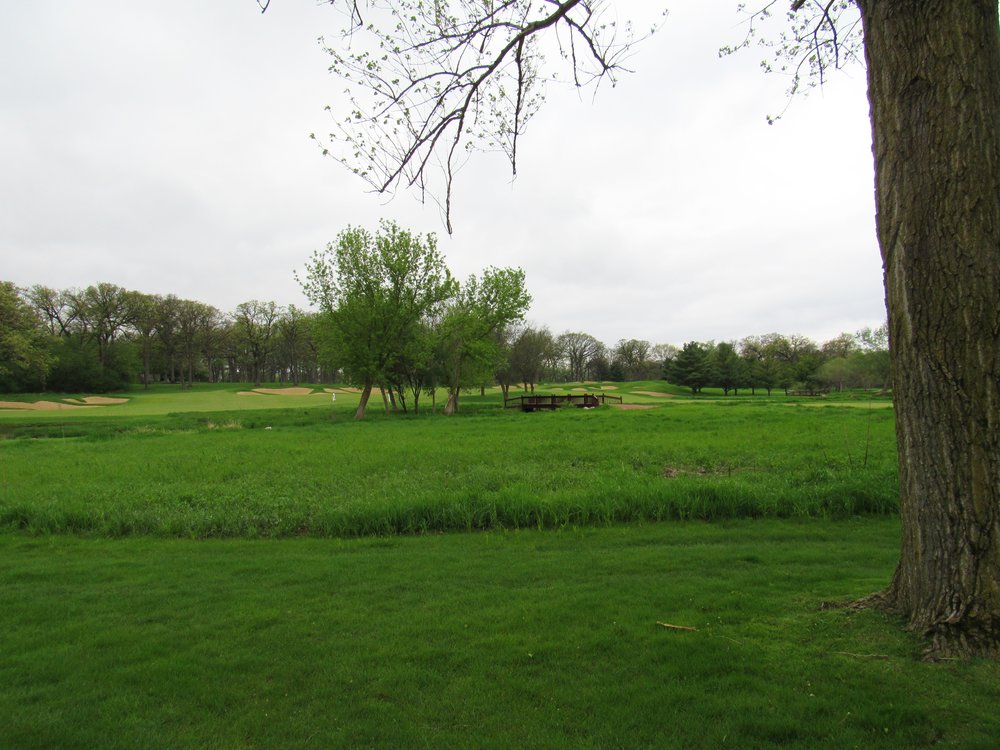One of the main topics of conversation at this week’s NCAA Championship is sure to be the golf course, Rich Harvest Farms.
Designed by its owner, golf enthusiast Jerry Rich, the legend of Rich Harvest Farms allegedly stems from Rich’s attempt to create his own Augusta National after he made the mistake of asking how much a membership would cost – one of the many unwritten rules you don’t break as a guest at Augusta. Since opening in the late ’90s Rich Harvest Farms has been a fixture in Golf Digest’s 100 Greatest Golf Courses and has played host to events like the Solheim Cup (2009) and the Western Amateur (2015).

Rich has an unquestionable and admirable passion for golf. Since earning his riches he’s donated a significant chunk of his wealth toward growing the game and charities that support youth involvement in golf. Couple that with the generosity he has displayed regularly offering up his course for use in championships and in some cases picking up the bill. Hosting the NCAAs has been a dream in the making for the billionaire for some time and frankly, golf needs more people like Jerry Rich.
Unfortunately, golf needs fewer courses like Rich Harvest Farms, which is a perfect example of amateur golf course architecture. I liken its design to what would happen if I was tasked with building a bridge.
Built on an expansive plot of land with a limitless budget, Rich Harvest boasts a brawny 7,700-plus yard setup with tight tree-lined driving corridors, an abundance of bunker acreage, lengthy walks from greens to tees, massive green complexes and hole designs you will see at no other venue in the world.
Rich Harvest’s unusual design will present college golf’s best players with an added test of patience this week. A player’s ability to get over bad breaks and move on from disappointments will be critical. Big numbers are nearly impossible to avoid and can be made even when perfect shots are executed. This will be especially critical during the stroke play portion of the competition, where every hole and shot are crucially important.
Let’s take a look at a few holes worth dissecting:
HOLE #4 – “Devil’s Elbow” – 467 yards – par 4
The fourth is already making headlines for its use of an artificial teeing ground for the women’s championship. Number four is one of the toughest par fours you will find anywhere due to the tight driving corridor, which requires players to hit a hard draw into a 20-yard landing area. Competitors who miss will be forced to chip out and make par the tough way.
-

The 4th tee shot
-

The narrow driving corridor
-

A look at the green which requires a long iron approach
HOLE #5 – “Amen – Holy Stone” – 191 yards – par 3
This hole is Jerry Rich’s attempt at mimicking the famed 12th at Augusta. The only problem? The green complex is terrible. Shaped like a bowtie, it has severe undulation in nearly every corner, making many pin placements highly questionable.
-

The 5th tee shot
-

The 5th green
Hole 9 – “The Road Hole” – 445 yards – par 4
No, Rich Harvest’s Road Hole isn’t like the famed 17th at St. Andrews or any of C.B. Macdonald and Seth Raynor’s renditions. Instead, this treasure has two fairways and sets of tees that make it challenging either way they play it. In the 2015 Western Am, they played the left tee box which puts players in a conundrum – try to thread the needle with a driver, requiring a left-to-right tee shot or lay it back short of the long bunkers (while still executing a 270-yard carry of the bunkers on the left). From there, the approach shot will be dictated by the day’s pin position on the 100-yard long green which has significant slope from back to front.
-

A look from the left tee box
-

A look at the split fairway
-

The bunkers which guard the tee shot from the left fairway
HOLE #12 – “Snead’s Crotch” – 393 yards – par 4
Spicing up a dogleg left by throwing a couple massive trees in the fairway is questionable at best. The 12th presents a unique challenge for players who will have to decide how to attack the hole. In stroke play, I expect players to hit long-irons and hybrids at the big tree, which sits 265 yards from the back tee box, leaving a short-iron approach. During the 2015 Palmer Cup, Jon Rahm and Ollie Schniederjans attempted to drive the green, which could be a play you see during the match play portion.
-

The trees which guard the middle of the 12th fairway
-

The tournament's 12th hole
HOLE #13 – “Hickory” – 220 yards – par 3
This lengthy par-3 is guarded by a big tree that overhangs the right side of a green that slopes from back to front. If the pin is on the right side, the tree can take shots that would be on the green and escort them in multiple different directions.
-

The long par-3 13th
-

The big tree which overhangs the green at the 13th
HOLE #17 – “The Cottage” – 489 yards – par 4
Probably the toughest hole at Rich Harvest is the par-4 17th, which stretches to 489 yards – something they should avoid doing. The lengthy par-4 requires a drive in the fairway to set up a long-iron approach over water to a green designed for a wedge shot. The green is extremely shallow, measuring only 17 yards deep, has a large ridge that bisects it from front-to-back, as well as plenty of back-to-front slope, which penalizes anyone who bails long.
-

The tee shot to the long par four 17th
-

A look at the approach shot to the 17th
-

The narrow 17th green which calls for a long-iron approach
Rich Harvest’s lofty ranking in Golf Digest’s 100 Greatest Courses in America speaks to everything that is wrong with their system. Is it immaculately conditioned? Absolutely. Does it defend par well? Yes. Does it have a great ambiance? Undoubtedly.
But is it a good golf course? Not in the least.
Rich Harvest Farms will make for great television and certainly generate conversation. It will reward great play and players who have a well-thought-out game plan and stick to it.
But mentally separating all the positives Jerry Rich brings to the game from the negatives that courses like his impose on golf is no easy feat. Rich Harvest Farms comes from the school of thought that “hard equals good” – a mindset that plenty of architects and club members have subscribed to over the last 20 years. However, it’s a theory that unintentionally creates the main the complaints people have about golf in the modern age – that it’s too expensive, it’s too difficult to learn and it takes too long.
While the golf course offends my sensibilities at every turn, it’s impossible not to be a fan of Jerry Rich the man and what he does for the game. Love the course or hate it, rest assured that we’ll have an interesting week at Rich Harvest Farms, one way or the other.
Sign Up for The Fried Egg Newsletter
The Fried Egg Newsletter is the best way to stay up to date on all things golf. Delivered every Monday, Wednesday, and Friday for free!


 by
by 
